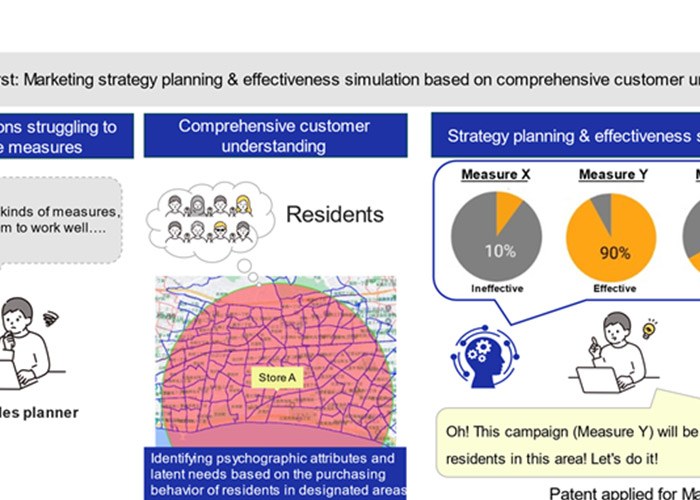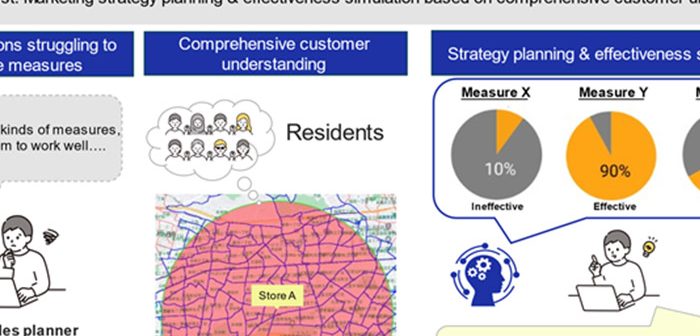
NEC Corporation has developed a marketing strategy planning & effectiveness simulation technology that utilizes generative AI to identify latent needs of customers and generate optimal measures.
According to an NEC survey, this is the world’s first technology that can automatically visualize customer interests and preferences (i.e. psychograhic attributes), generate measures, and predict customer responses to those measures.
NEC aims to launch services with this technology in 2024.
This technology has been used to develop ideas for new services that are under consideration for next-generation service stations for ENEOS Corporation, Japan’s largest oil & energy company.
Currently, companies that provide services to customers (real estate, retail, distribution, energy, etc.) try to understand the latent needs of customers before opening a new store, starting a new type of business, or selling a new product or service.
In order to understand customer needs, methods such as questionnaires and roundtable discussions, as well as collecting and researching information on the Internet are used.
However, these methods lack comprehensiveness and rationality, making it difficult to accurately grasp the potential needs of customers.
Other options include the use of outside consulting services, but there are growing expectations for methods that can easily and interactively generate optimal effective measures.
Overview and features of the marketing strategy planning & effectiveness simulation technology
1. AI-based marketing strategy planning & effectiveness simulation of customer response rates that enables the execution of the most effective measures
By using NEC’s AI technologies (generative AI, consumer attribute expansion technology, knowledge discovery and strategy planning technology) and statistical credit card payment data / other purchasing history data, it is possible to analyze customers’ interests and preferences in a designated area or specific store, to identify latent needs and generate optimal measures. In addition, since it is possible to simulate the response rate of customers to the proposed optimal measures, it is possible to confirm the expected effects before implementing the measures so that only the most effective measures will be applied.
2. Large Language Model (LLM) of generative AI enables interactive analysis in natural language
By utilizing LLM, a type of generative AI, users can generate optimal measures interactively and simulate response rates using natural language. In addition, once prompts (instructional text) are entered, the results are output in a few minutes so that users can analyze repeatedly until they are satisfied.
3. Combining purchase history data with open data enables analysis even by companies that do not have in-house data
In addition to a vast amount of purchase history data, NEC’s AI technology enables the collection and utilization of highly relevant open data on the Internet. Therefore, comprehensive and rational analysis is possible, even without having in-house data (data owned by a company can also be utilized).






